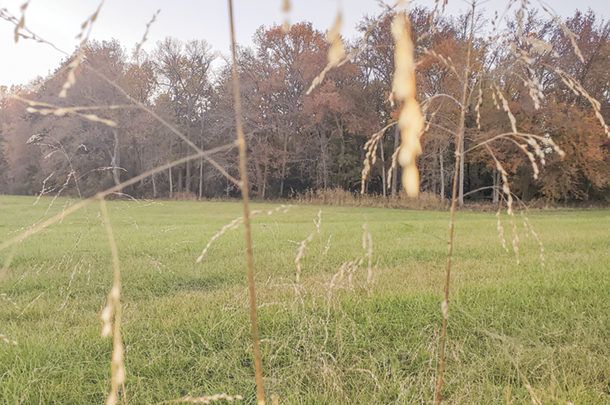Single-statement truisms in the livestock feeding business are a rare occurrence. “If this occurs, then that will occur,” is usually prefaced by a disclaimer, “as long as Mother Nature cooperates.” Unfortunately, here in the Northeast, ideal weather conditions for making mold-free, quality “other grass hay” is increasingly just a blip on the bell curve.
Every year, more than 70 million tons of grass and grass-legume forages are harvested in the U.S. In the Northeast, the bulk of gestating livestock winter forage intake requirements comes from feeding field-dried hay comprised mostly of native and improved varieties of cool-season grasses. In Pennsylvania, where over a million acres of grass hay is produced, 2021 marked the sixth straight wettest haying season on record. For the 980,000 acres of similar hayground in New York state, producers like those in central New York saw the hottest 19 summer nights in 66 years. In New Jersey, some 90,000 acres of grass hay were subjected to the sixth hottest summer since 1895. New Jersey also saw the ninth warmest June and fourth warmest August since 1991. High humidity drove those heat indexes. Unfortunately, when there was a window to make field-dried hay in the region, high humidity during anthesis coupled with periods of drought stress impaired quality. This is especially true for hay comprised of bromes, wild and cultivated rye, perennial ryegrass, Italian ryegrass, tall fescue, meadow fescue or creeping red fescue.
Why do fescues impair quality?
Fescues are a common pasture and hayfield grass in the U.S. They are also excellent forage for livestock. The genus is comprised of more than 400 species worldwide. If you farm in the Northeast, native and improved varieties of Festuca arundinacea (tall fescue) and Festuca pratensis (common meadow fescue) are more than likely abundant. Fescue grasses are naturally infected with the fescue toxicosis endophyte Neotyphodium coenophialum. Italian ryegrass and many other cereal grain-type grasses are hosts to the ergotism endophyte Claviceps purpurea.
What are endophytes?
Endophytic fungi live inside the leaves, fruits, flowers and stems of many types of plants. These fungi are symbiotic in grass production. Without them, forage grasses would not survive stresses like drought, intensive grazing, multiple harvests or pest pressures. Unfortunately, one of the negatives of this symbiotic relationship is the production of alkaloids that can harm herbivores when levels become too high. Some improved fescue varieties like Kentucky-31 are known to be very “hot” for endophyte proliferation. Efforts to boost crude protein (RFV) content with nitrogen application can exacerbate toxicosis issues. Endophyte fruiting bodies can produce toxic alkaloids alone or in synergy with other mold-producing mycotoxins like fusariums. These toxins can greatly affect people (respiratory inhalation) and horses, cattle, sheep and goats (ingestion and respiratory inhalation). Under high heat indices driven by humidity, animals suffering from past exposure to fescue toxicosis and ergotism cannot regulate their body temperature due to what is called vasoconstriction or narrowing of the blood vessels. The same occurs in wintertime when temperatures drop below freezing. Blood flow to the hoof and other extremities is restricted.
High cost of chronic ingestion
For most cattle producers in the Northeast, eight months of winter feeding coincides with nine months of gestation and a spring parturition. Winter feeding of donkeys, horses, cattle, sheep and goats fed a daily diet of hay containing high endophyte toxins can experience a multitude of ambulatory, respiratory and reproductive problems. Gangrene of hooves, tails and ears from fescue toxicosis isn’t just a single-grazing-season issue. Endophyte toxins can persist in stored hay for several years. Note that due to their smaller body size and free-choice feed intake, donkeys and miniature ponies are more susceptible to fescue malformed hoof syndrome than full-size equines.
What to look for in livestock
During the summer when fescue seedheads were maturing, did you notice pasture animals standing in water? Were they or are they lying down while other foragers are out foraging? Did they come out of winter with very rough or matted hair coats that do not shed out as grazing commences?
Inflicted cows with calves can have 50- to 100-pound losses in weaning weights compared to cow-calf pairs consuming low-endophyte varieties of fescue. In addition to loss of gain and condition, fescue toxicosis reduces milk production. Ergotism can also cause uterine follicle malformation. If a fresh cow has “not bagged up” or has a retained placenta, these toxins could be the cause. Remember, July turned-out bulls cannot maintain high performance and breed all open cows in a 42-day window that coincides with the peak of high endophytes if their or the cows’ rear feet are afflicted by what medieval Europeans called “Saint Anthony’s fire.” Another unseen, acute, often fatal illness associated with fescue toxicosis is liver failure, of which horses are particularly susceptible.
What to look for in feed
Besides hay refusal, look for animals with excessive salivation and visibly runny, drippy, perspiring noses. Hay handlers often notice their own respiratory discomfort during and after feeding. Unconsumed ergot bodies will fall to the feedbunk floor. Look for black mouse-turd shapes in the chaff. Look for the presence of fescue grass heads in bale portion refusals. Fescues are finely divided panicles on thin stems compared to the singular stem and seedhead of timothy and thicker stem and compact panicle of orchardgrass. The percentage of fescue in the hay is key. Is it mostly fescues? Or mostly other grasses? If the ration also includes ground grain, look for ergot bodies in whole oats, rye and wheat.
If found, or animals are exhibiting signs of exposure, test the refused hay and grain. Knowing the level of adulteration will determine if the feed is safe to continue feeding. Since a cow can consume 35 pounds of hay a day and a fifth as much grain, it is critical samples submitted for testing are representative of ingested volume of intake and sampled from the suspected contaminated bales or batch of feed.
It’s worth it to scout and test hay
Mycotoxin testing and capture of testing costs in sale prices is much easier to implement before the field is baled and less costly to all parties. The 50 million acres of “all other hay” produced in the U.S. harvested by some 2 million operators adds up to well over 150 million round bales. In a hot and humid hay season, the likelihood bales comprised of mature fescues containing deleterious fungal byproducts increases with moisture content.
In wet years, hire a technical service provider to assess fields for fescues, Italian ryegrass and brome percentages. Examine seedheads for signs of ergot sclerotium before mowing. Collect seedheads for endophyte and mycotoxin levels before baling. The average cost to test for just ergovaline detection is $90. A complete alkaloid panel includes testing for all nine ergopeptine alkaloids. Other mycotoxins to test for include Claviceps purpura, Epichloë coenophiala, Epichloë festucae var. lolii, Neotyphodium coenophialum and the mycotoxin-producing molds alternaria, aspergillus, cladosporum, fusarium, mucor, penicillium and rhizopus species.
Share observations and results
In past decades, during “natural disaster declarations,” state agriculture departments cost-shared or provided technical assistance to dairy producers to test feedstocks for mycotoxins while minimizing out-of-pocket expenses. Here in the Mid-Atlantic, beef cattle, sheep, goat and horse producers, sellers and buyers largely make up the hay market end users once dominated by dairy producers. Livestock producers can benefit from the same relationship. Talk with state departments of agriculture about providing these services (scouting, testing) in a wet summer as part of adapting to climate change and natural disaster preparedness.












